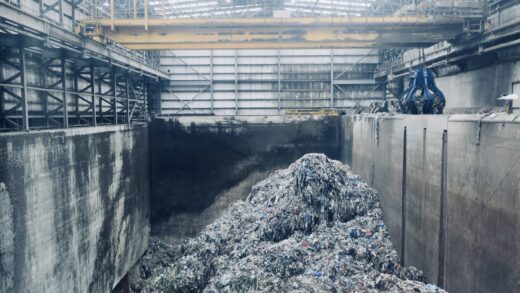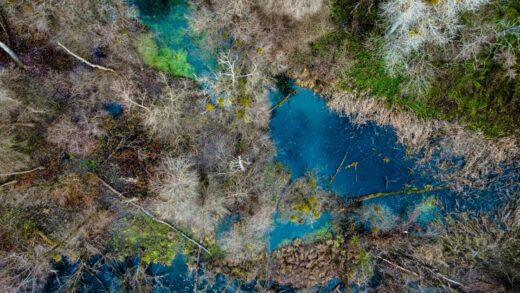In the mining industry, preparing a 43-101 Technical Report is essential for ensuring transparency, regulatory compliance, and investor confidence. This type of report is required by the Canadian Securities Administrators (CSA) for any publicly listed mining company on Canadian exchanges, including those raising capital on the Toronto Stock Exchange (TSX). Whether you’re working on a mineral exploration project or managing a developed mine, ensuring that your technical report meets NI 43-101 standards is a legal necessity.
This guide will walk you through the steps of preparing a compliant 43-101 Technical Report, ensuring that you meet all regulatory requirements and provide investors with clear, transparent, and credible information about your mining project.
1. Collect Comprehensive Data
The foundation of a strong 43-101 Technical Report is comprehensive and accurate data collection. Before preparing the report, you must gather geological, technical, and economic data related to your mining project. This includes everything from exploration results and drilling data to mineral resource estimates and feasibility studies.
Key components include detailed geological maps, mineral testing results, core sampling data, and historical exploration activities. The data should be up to date and verified to ensure it reflects the current state of the mining project. Any gaps or inaccuracies in this initial data collection process can compromise the integrity of the entire report, so attention to detail is crucial.
2. Follow NI 43-101 Guidelines
A 43-101 Technical Report must strictly adhere to the guidelines set by National Instrument 43-101 (NI 43-101), which ensures the standardization of mineral resource and reserve disclosures for mining companies in Canada. These guidelines outline the format and content required in the report, covering everything from property descriptions to technical data.
The report should include sections on the location and ownership of the property, geology and mineralization of the site, resource and reserve estimates, and mining methods. It must also discuss the economic viability of the project, environmental considerations, and risk factors. By adhering to these guidelines, mining companies can ensure that their reports meet the expectations of regulators, investors, and stakeholders.
Failure to comply with NI 43-101 can result in regulatory penalties and loss of investor trust, making strict adherence to the guidelines a top priority.
3. Engage Qualified Persons (QP)
A critical aspect of preparing a compliant 43-101 Technical Report is the involvement of Qualified Persons (QP). A QP is a certified geologist or engineer who has the necessary experience in mineral exploration, extraction, and reporting. Their role is to ensure that the data and conclusions presented in the report are accurate, reliable, and fully compliant with NI 43-101 standards.
The QP takes responsibility for the technical aspects of the report, including the verification of data, resource estimation, and geological modeling. Their certification is crucial for lending credibility to the document, ensuring that investors and regulators can trust the information being disclosed.
It’s important to engage a QP who has specific experience with the type of mineral deposit you’re dealing with. For example, if your project involves gold mining, the QP should have a track record of working with gold deposits. Their expertise will help to ensure that the report is tailored to the specific challenges and opportunities presented by your project.

4. Data Verification
Data verification is a vital step in the preparation of a 43-101 Technical Report. The QP must verify all geological, technical, and economic data included in the report to ensure its accuracy. This involves cross-referencing new exploration data with historical data and conducting site visits to validate the information.
Verification is particularly important when presenting mineral resource and reserve estimates, as these figures are often the most closely scrutinized by investors. Any discrepancies or errors in this data could lead to serious consequences, including loss of investor confidence or regulatory intervention. By ensuring that all data is thoroughly verified, companies can avoid these pitfalls and produce a report that is both accurate and trustworthy.
5. Focus on Transparency
Transparency is a key component of any 43-101 Technical Report. The report must clearly outline all methodologies, assumptions, and risks associated with the mining project. This includes describing the sampling methods, the criteria used to estimate resources, and any potential challenges that could affect the project’s feasibility.
Mining companies are encouraged to provide detailed explanations of how resource estimates were calculated and to be open about the uncertainties involved. Being transparent about risks, whether they pertain to environmental concerns, political factors, or operational difficulties, is essential for maintaining investor confidence. A well-documented report that acknowledges both the opportunities and risks is far more credible than one that glosses over potential challenges.
Leading Companies Offering 43-101 Technical Report Services
Many companies specialize in helping mining firms prepare compliant 43-101 Technical Reports, offering services ranging from data collection to verification and final report preparation:
- K-MINE: A leader in mining software and consulting, K-MINE provides robust solutions for producing fully compliant 43-101 Technical Reports. With a focus on geological modeling and resource management, K-MINE helps mining companies ensure the highest standards of accuracy and transparency in their technical reports. By integrating software solutions that streamline data verification and resource estimation, K-MINE ensures that your 43-101 Technical Reports meet all regulatory requirements. 43-101 Technical Reports prepared with K-MINE’s guidance stand out for their clarity and reliability.
- SRK Consulting: With expertise in geological and environmental assessments, SRK Consulting helps mining companies prepare detailed and compliant technical reports. Their team of Qualified Persons ensures that resource estimates and risk assessments are accurate and aligned with NI 43-101 standards.
- Golder Associates: Specializing in environmental sustainability, Golder Associates helps mining firms produce high-quality 43-101 reports. Their services focus on integrating geological data with sustainability considerations to ensure responsible mining practices.
Conclusion
Producing a compliant 43-101 Technical Report is essential for mining companies looking to raise capital, gain regulatory approval, and maintain investor trust. The process requires meticulous data collection, strict adherence to NI 43-101 guidelines, and the involvement of Qualified Persons to verify the data and ensure its accuracy. Companies must also focus on transparency, clearly outlining risks and methodologies to build credibility with stakeholders.
By working with leading consulting firms such as K-MINE, SRK Consulting, or Golder Associates, mining companies can ensure that their 43-101 Technical Reports are not only compliant with Canadian regulations but also provide a clear and reliable picture of their mineral projects. These reports serve as a foundation for responsible mining practices, helping companies navigate the complexities of the mining industry while maintaining transparency and investor confidence.




